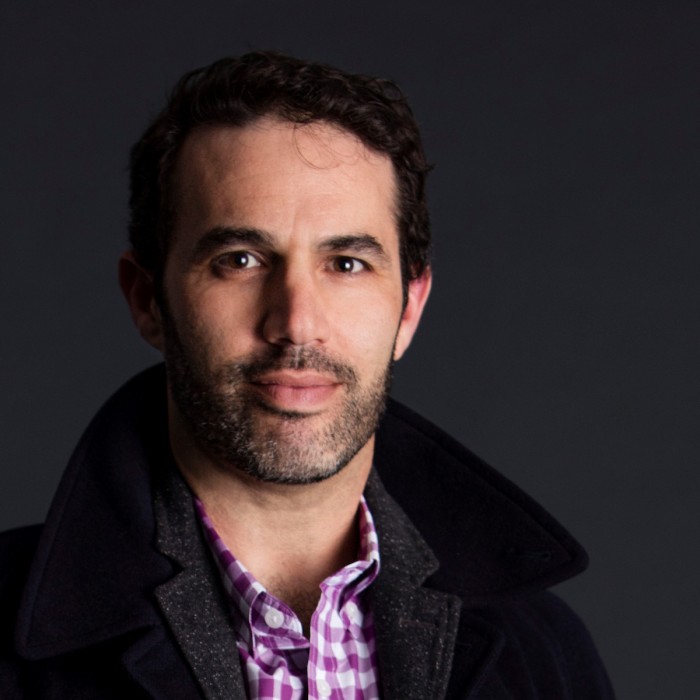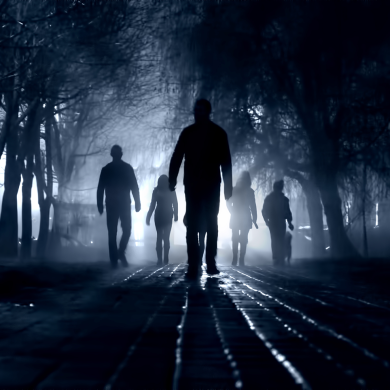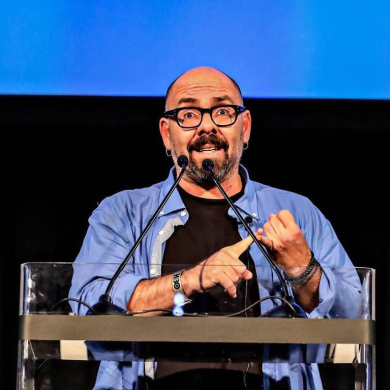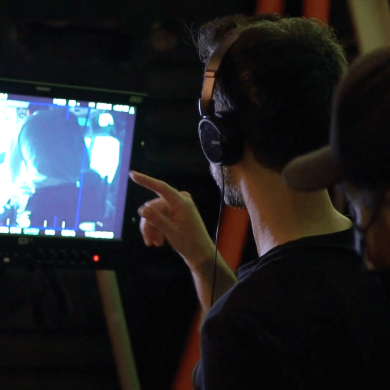By: Lucy Sosa

In a few short years, Mark began shooting editorial work for top publications including Glamour, GQ, Esquire, Conde Nast Traveler, Cosmopolitan, InStyle, Town & Country, Teen Vogue, Wired, The Hollywood Reporter, and Men’s Health. Mark’s photographs have appeared in advertisements, catalogs, and brochures for dozens of companies including American Express, AT&T, CISCO, Visa, Google, Bank of America, Procter & Gamble, Verizon, Amtrak, the Canadian Tourism Commission, Chase Bank, and IBM. His work has won countless awards including Clios® (awarded for creative excellence in advertising and design) and multiple selections in the Communication Arts, American Photography, and Advertising Photographers of America annual contests.
Mark’s career shooting fashion has taken him all over the world, but after traveling to over 40 countries, he has enjoyed the transition into the entertainment and celebrity space in Los Angeles. CreativeFuture recently visited with Mark to ask him about leaving a promising career in consulting behind, what differentiates him from the guys with iPhone 7s, and the difference between wanting to create vs. having a need to create. And no, Mark is not related to Annie Leibovitz.
Lucy Sosa: It looks like you were on a business path early in your career. What happened?
Mark Leibowitz: My dad was an accountant, so I decided I was going to go into business. The plan was to be a consultant for a couple of years after graduating from Stanford, then get my MBA, and then become CEO of a company. But about 8 months into my consulting job, I realized I didn’t enjoy what I was doing day-to-day. My side job working as a photographer for the school newspaper during college and taking pictures over the summer was much more enjoyable. I started doing research on what it would mean to have a career in photography. I realized fairly quickly that it was possible to build this career by speaking to a few friends and getting connections through them.
LS: Usually parents will say, “You can be an artist, but I’ll pay for law school just in case.” Have you been able to apply your business skills to your photography?
ML: My father told me during college that if I wanted to go off and be a photographer, he didn’t need to pay for me to finish Stanford. So, for me, it was the opposite. In terms of business skills applying to my art, of course they apply. There’s no way you could run a successful creative business without applying some sort of business skills. Even the top fine art studios are run like businesses. It makes a huge difference having the ability to treat your art as a profession. To effectively share your art and vision with the world, especially in today’s market where there is so much content being produced, you really need a business plan and a marketing plan for getting that work out into the world.
LS: Does part of you think getting an MFA would have prepared you better for a career in photography?
ML: I would love to get an MFA for the sake of getting an MFA and having it on the resume. It would be exciting and inspiring to teach and share what I’ve learned over the years and apply it in more of a theoretical sense. But in terms of it being a prerequisite for success, it most definitely is not for the commercial world. I think it is more helpful if you are in the gallery world. If you hear me, as opposed to a fine artist in the gallery world, speak about photography, we’ll talk in very different cadences. They’ll talk about the work much more esoterically because that’s the way the language in that world works –there’s kind of a split that occurs there.
LS: Do you consider yourself more of a commercial photographer?
ML: I’m definitely more of a commercial photographer. I think the business background led me there. One of the keys to success in the arts is having a strong support network of people you can bounce ideas off of, people who can connect you, and people who can find you jobs. Because my undergraduate degree was from Stanford, most of my friends got into some sort of business, law, or medical type of work. Those connections led me into the business and commercial photography world. If I had gotten my MFA, my connections would be more in the art world and would have led me to people in the gallery and museum space.
LS: Do you have your own offices out here or do you work in a work-live space kind of thing?
ML: I currently have an office in Santa Monica, but it’s not a studio. We rent studios when we’re shooting. I also turned one of the bedrooms in my home into an office. Since I spend half the year traveling, having an office feels like a waste, but it’s nice to get out of the house. As an artist, it’s very easy to become isolated in your own space – it’s good to be able to get out and see other people.
LS: Let’s talk about some of your traveling, is that an aspect of the job you love, or would you love to be in a studio with projects coming to you?
ML: I’m at a point where I’ve been to 30-40 countries and don’t feel the urge to travel, but I still enjoy it very much. I’ve been moving away from fashion, which is heavily based in New York and Europe, and moving into the entertainment and celebrity space. It’s something I wasn’t really interested in before, because I wanted that European adventure. But it allows me to have more time here at home in Los Angeles, where I’ve lived for close to 18 years.
LS: In terms of subjects, what kind of photography work do you gravitate toward?
ML: There are a bunch of different ways you can split up the photo industry. There are the clients you work for – like advertising agencies, magazines, newspapers, corporations, graphic designers, etc. Then there are things that you shoot for those clients like models, cars, or products. It’s kind of like “connect the dots” of clients vs. subjects, and typically the most enjoyable situation is shooting whichever one of those subjects you like for editorial or magazines. You’re not paid a lot of money but you’re given a lot of creative freedom.
Advertising work pays more money but you are given a very specific creative brief that you need to follow very closely. You still need to apply your vision but, at the end of the day, you’re really producing exactly what the client is asking for. For me, I enjoy shooting people in editorial the most.
LS: That’s interesting because you can give people direction – where to look, how to turn, even what emotions to exhibit. Whereas when you’re shooting products it’s all up to you. You can’t tell a car to be “more fierce!”
ML: Some people really love the technical aspects of shooting a car or shooting a product, and it’s not that shooting people isn’t technical because it is, but if you’re shooting a product it’s all about how you apply your lighting technique. With people, you still need to have all the technical aspects right – the hair has to be right, the makeup right, the wardrobe right, the location has to look good, the lighting has to be the best lighting for that person’s features – and on top of all that, you need to be communicating with your subject to get the response you’re looking for. Whether that’s having them be happy, sad, serious, or any of those variations, it’s dependent in the moment and that to me is exciting.
LS: What are the major differences between shooting film vs. digital?
ML: One of the big differences between the film world and the digital world is the digital world gives you instant results. You can see what you’re capturing. You can instantly see if you got the expression you were looking for or if you need to shoot more. Before digital, you had to take a Polaroid to be sure the lighting and technical aspects were right. You did all that before you shot on film and worked through the various poses. And then you had to send the film to the lab! If you rushed it, you’d get it back in 24 hours, but most likely, you’d get it back in three days. If you were shooting for an ad agency or a big magazine, you had to be really confident and know exactly what was going to happen with the light, camera, and film.
Shooting digital has allowed for a reduction in technical skills because photographers can see what’s there. Certain photographers like myself and some of my peers have been trying to gain extra knowledge to be able to differentiate ourselves from someone who just picks up the camera. We want it to be very obvious there is a difference between the work we’re producing and the work of someone who happens to be shooting with a digital camera.
LS: What’s it like to be a professional photographer when there are guys with iPhone 7s and Instagram pages who claim to be photographers? Is that something you see as positive?
ML: The fact that digital tech has democratized photography is incredible because we now shoot more photos in a day than we did in an entire year 20 years ago. Not a lot of people back then were producing content, especially not smaller businesses. Now every business, no matter how small, has a website and accounts on Facebook, Instagram, and Twitter. All of those channels need content that has to be updated at a much faster pace.
While there has been this massive expansion of guys with cameras, there has been an even bigger expansion of the need for content. The number of people who actually decide to be professional photographers, even with very little knowledge, is far smaller than the number of businesses that need content. Even individuals need content because people have become their own brands.
LS: You shoot for the California Coastal Commission. What’s the hustle in that world? Was that a friend thing?
ML: Yeah, that’s a friend thing. The California Coastal Commission is a pro-bono shoot, but it’s hard to find good pro-bono opportunities because not a lot of work is produced for charities. If you want to be spending a couple days shooting something that’s a really cool concept and is going to be seen and published, that’s tough to do. Pro-bono work is actually harder to find than paid work.
LS: Why do you think that is? Do some of these organizations just assume they don’t have the budget?
ML: Yeah, and there are barely any nonprofits actually large enough to put out ads compared to businesses.
LS: Do you actively search for causes you believe in?
ML: If you’re a commercial or professional photographer shooting advertisements and fulfilling other people’s visions, you can very easily burn yourself out – especially if you’re not creating your own art. It’s also very easy to lose inspiration. You stop the creative juices from flowing. Finding a personal project that you care about and that interests you is really crucial for longevity in the arts. You do the commercial jobs so you can do the personal work and the art that you care about.
LS: You lead me into another question, which is: Do you compartmentalize your work? Like, “Here is my commercial work, and here is the work I do for myself?”
ML: It’s really easy to compartmentalize your work, which is something I’ve done to a detriment to my career. A lot of times the best work you’ll produce as an artist is when you try something new. I’m constantly working on my ability to not lock myself into what it is to shoot a portrait, or what it is to shoot an ad, because if you’re very formulaic about how you’re shooting a portrait or ad, and you don’t bring some creative vision and freedom of movement to your work, then you’re cheating yourself and the client. Also, if you don’t bring the organization and planning you bring to an ad to your personal work, you’re cheating yourself. It’s difficult to break out of those compartments. The moments that you do, that’s when the work can soar to higher level.
LS: Describe the last time you woke up on a Saturday morning, grabbed your favorite camera, and said, “I’m just going to go shoot stuff.” Does that happen and does that help your work?
ML: Typically, I have those moments when I’m traveling. But for me it’s not about getting a great one-off photo. It’s more about building a series over time, because at this point in my career, I have thousands and thousands of great one-off photos. I could walk with my iPhone to the beach right now and shoot a beautiful photo – that’s my job.
I get more creative fulfillment from producing a series. Fifteen years ago, I came up with the idea to do a series of all my friends’ kids. I’m just over 40, and my friends barely come out anymore so I bribed them and said, “If you come out, I will shoot portraits of your kid.” And it worked! I was able to see friends I hadn’t seen in 2-4 years.
LS: How much time do you dedicate to tracking down your work?
ML: It is absolutely impossible to keep tabs on where all my work is. My work is stolen at such a high rate that there is no possible way I can come close.
LS: What do you consider stealing?
ML: I consider anybody who uses my work on a commercial website, where they’re making money off the content, to be stealing. I also consider someone who has a million followers and gets paid for their influence to be flat out stealing when they repost a photo or video without attributing it to me. Even if they do attribute it to me, I’ll get some benefit like more followers, but that’s not something I would choose.
LS: So, if I had a photography appreciation blog and said, “Oh I stumbled across this photo” by this guy Mark and link it to your site, is that ok?
ML: I would say you should technically ask me first, but unfortunately, the world has become a place where the norm is taking content from creatives. It’s become a huge problem for us because we would have to spend all of our time tracking down our work. And when we do track it down, a lot of people refuse to pay for it and it doesn’t make sense to go to small claims court. The actual path for doing it is crazy.
I know the Copyright Office is working on a potential small claims option, which is hugely necessary because theft is rampant. It used to piss me off and keep me up at night to see my photos getting stolen. My heart would race and I would write emails to people, but because of the frequency of how much it’s happened, that feeling of agitation has passed. If there is a blatant commercial use of my photo, where it’s not just being posted on Pinterest or unattributed on Instagram, then I’ll absolutely go after them.
LS: If you had some sort of advanced knowledge of the digital world, knowing it would change photography so much, would you still have pursued it? Is it a profession other people should still pursue?
ML: I would definitely still have pursued photography despite whatever changes were going to happen because I have this need to create. I have to do it. If I’m not out there regularly shooting pictures or videos, I get agitated. That’s what I felt when I was a consultant and not creating. I’m generally less happy when I have a slow period and I’m not creating personal content for myself. The fact that the industry is changing doesn’t change my need to create.
The question you need to ask yourself as an artist is, “Do you want to create? Or do you need to create?” If you want to, then this is not the field for you. You will get pummeled by people who really need to do this and who have the motivation to do this. In terms of photography being a profession people should pursue, I’d say there is more content being created now than any time in history, and that is a huge opportunity for people of all levels to get out and create content on a professional level.
There are many small companies and small businesses that can’t afford a 20-year veteran, so those people turn to young upstart photographers. That’s an opportunity that was much harder to come by when I started. The other thing that’s really important is spending time working on your vision, what do you bring that’s different?
LS: What’s the riskiest thing you’ve ever done?
ML: I’d say the biggest risk I take on a regular basis is ignoring my intuition on what the future holds for digital photography only because I’m AFRAID. For example, not taking the time to grow my Instagram following when I know having 100,000 followers is a way to get business in the future. I’m taking a risk because I KNOW something is moving in a certain direction and I’m choosing to ignore it by clinging to the past. Clinging to the past is risky.



